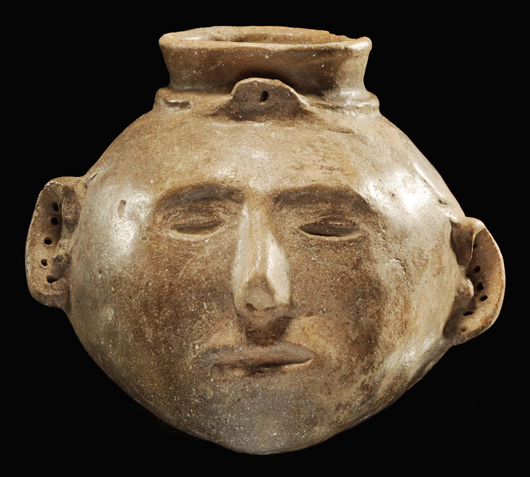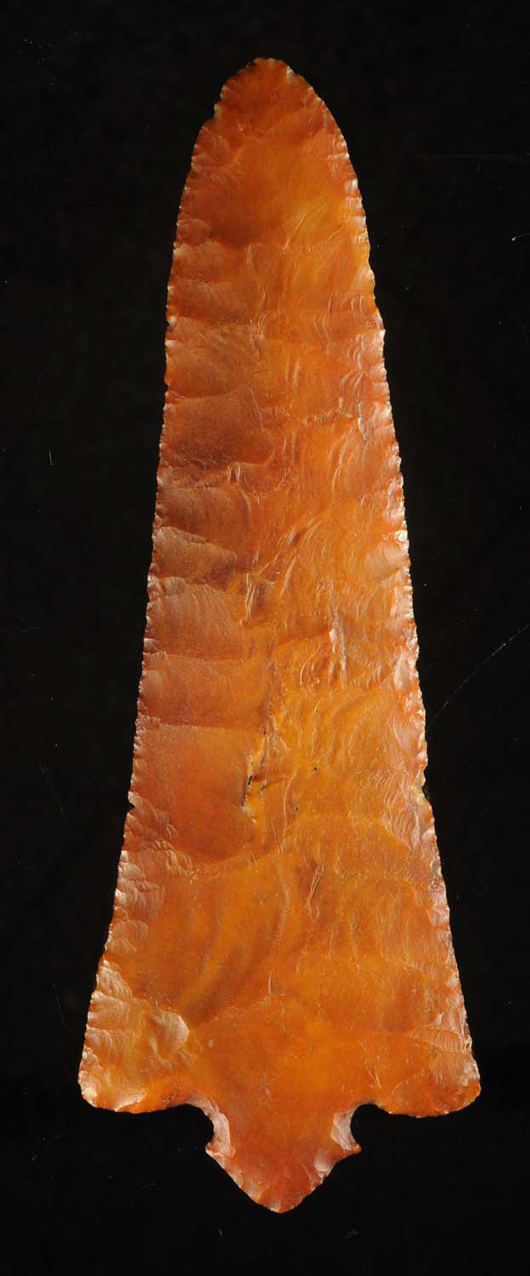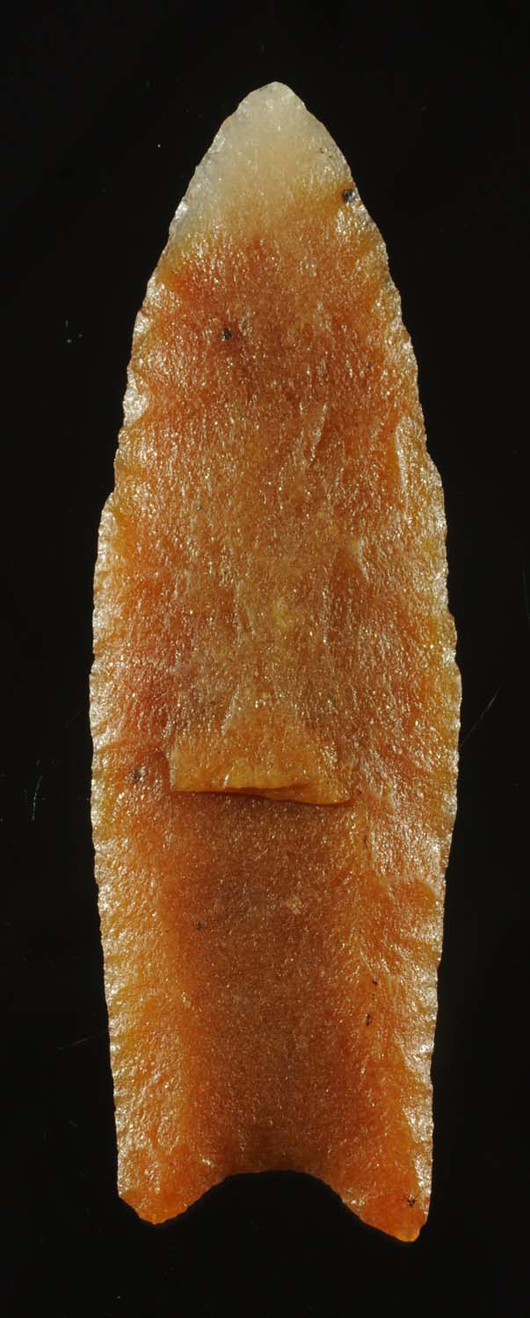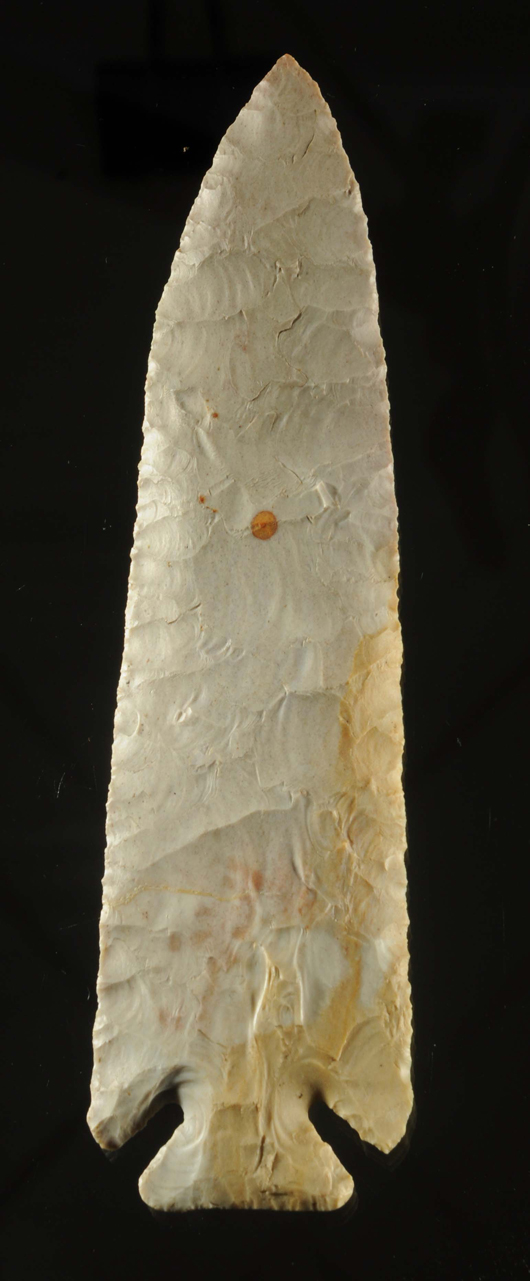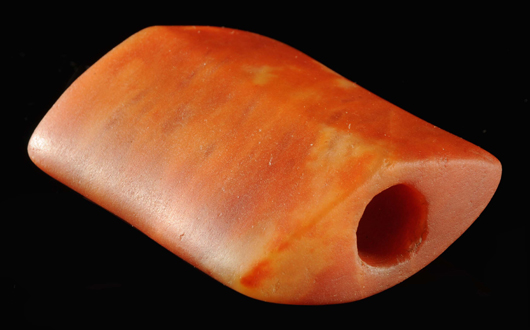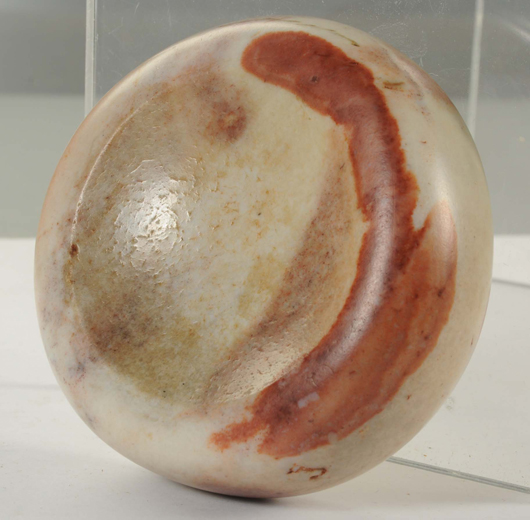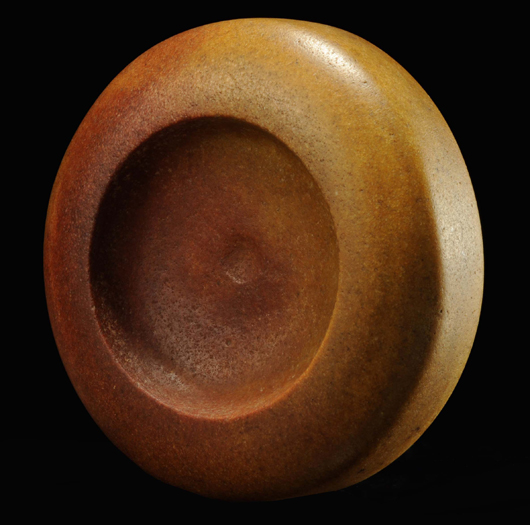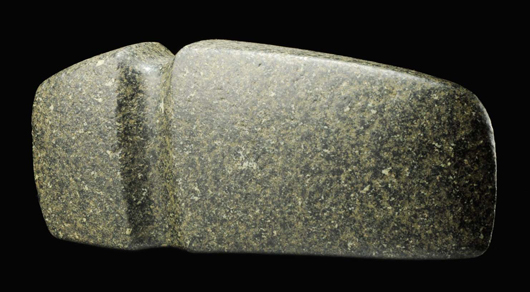Grayware headpot, Late Mississippian, 600 B.P., Golden Lake Site, Mississippi County, Arkansas, $78,000. Morphy Auctions image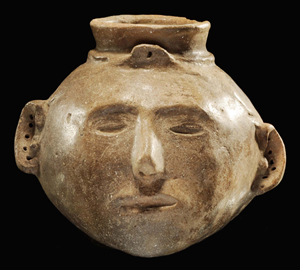
The top 10 was led by the exceptional Ross Blade, an exotic flint specimen from the Woodland period, Hopewell phase (2000-1500 B.P.). Crafted to a very high standard, the translucent sunset orange blade measuring 8 1/8 inches would have been reserved for only the elite of Hopewellian society, said Morphy’s Prehistoric Americana expert John Mark Clark.
“The Ross Blade is likely the most beautiful, and largest, known example of its type in private hands,” said Clark. “Legend has it that this blade traveled from the Midwest – probably southern Illinois – all the way to Utah, where it was found during the restoration of an antique truck. The blade had been wrapped in a shirt and stashed inside a door panel. It made its way back to the Midwest, where it ended up being one of few things that survived a massive house fire. That’s why the blade is known to collectors as ‘The Survivor.’” At Morphy’s auction, the Ross Blade reached the upper end of its estimate range, selling for $276,000.
Two other blades achieved top-10 status. A translucent sugar quartz Clovis point from the Early Paleolithic Period (11500-10000 B.P.) was discovered near Buckhart Township in Fulton County, Illinois. Its distinctive white tip was part of the craftsman’s design plan, Clark said, and because it is so unusual, it was chosen for inclusion on the Paleo poster created by Pete Bostrum, Lithic Casting Lab, Troy, Illinois. “The ‘Bostrum blessing’ is given to only the finest of specimens,” Clark noted. Against a $45,000-$60,000 estimate, the point realized $69,000. Not far behind was a corner notch blade of Missouri origin, from the Archaic Period (7500-4000 B.P.). With provenance from several well-known early collections, the 7-inch blade described in Morphy’s catalog as “museum grade” sold for an above-estimate price of $64,800.
Having a gemstone-like color, a ferruginous quartz hourglass bannerstone of the Late Archaic Period (4000-3000 B.P.) was bid to $39,000 against an estimate of $20,000-$30,000; while two discoidal game stones – believed to have been playing pieces for “chunkey” hoop-and-stick games enjoyed by North America’s indigenous population – were in great demand with bidders. A flint discoidal specimen from the Mississippian Period (1000-5000 B.P.), found in Dickson County, Tennessee, surpassed its high estimate to settle at $33,000. Another discoidal highlight from Tennessee – dating to the same general timeframe – was crafted of finely grained quartzite. It changed hands at Morphy’s for $39,000.
One of the most compelling objects in the sale was a grayware headpot discovered at the Golden Lake Site in Mississippi County, Arkansas. Featured in Dr. James F. Cherry’s epic 1990 book dedicated to headpots, the vessel is described by the author as having “an unusual occipital bun…multiple ear piercings, a pierced forelock tab, and a highly burnished finish…with no restoration, [which is] almost unheard of…” The pot was offered together with two X-rays confirming its solid, untouched condition; a copy of Dr. Cherry’s book, and two collector journals depicting the vessel that is known as the Ray Pohler Headpot. It garnered a winning bid of $78,000, just shy its high estimate.
“This was our second auction of North American artifacts and arrowheads, and it proved without a doubt that there is a large and dedicated following for prehistoric specimens. We will continue to develop the Prehistoric Americana division at Morphy’s and offer our ironclad policy of backing the authenticity of each item sold,” said Dan Morphy, president and founder of Morphy Auctions.
Quality consignments are currently being accepted for Morphy’s next American Artifact and Arrowhead Auction. To discuss a consignment, contact John Mark Clark by calling 931-237-3646 or emailing markclarksville@live.com.
View the fully illustrated catalog for Morphy’s May 17 auction, complete with prices realized, online at www.LiveAuctioneers.com.
# # #
Click here to view the fully illustrated catalog for this sale, complete with prices realized.
ADDITIONAL LOTS OF NOTE
Grayware headpot, Late Mississippian, 600 B.P., Golden Lake Site, Mississippi County, Arkansas, $78,000. Morphy Auctions image Ross blade, Woodland period, Hopewell phase, 8 1/8 inches long, $276,000. Morphy Auctions image Translucent sugar quartz Clovis point, early Paleolithic, Fulton County, Illinois, $69,000. Morphy Auctions image Earl Townsend’s monumental 7in Corner Notch Blade, Archaic, 7500-4000 B.P., Missouri origin, $64,800. Morphy Auctions image Ferruginous quartz hourglass bannerstone, Late Archaic period, 4000-3000 B.P., $39,000. Morphy Auctions image Flint discoidal, Mississippian period, 1000-5000 B.P., Dickson County Tennessee, $33,000. Morphy Auctions image Double-cupped discoidal, Mississippian period, 1100-600 B.P., Hamilton County (Chattanooga), Tennessee, $39,000. Morphy Auctions image Nebo axe, speckled granite, Middle Archaic period, 7500-4000 B.P., Louis County, Iowa, $11,400. Morphy Auctions image